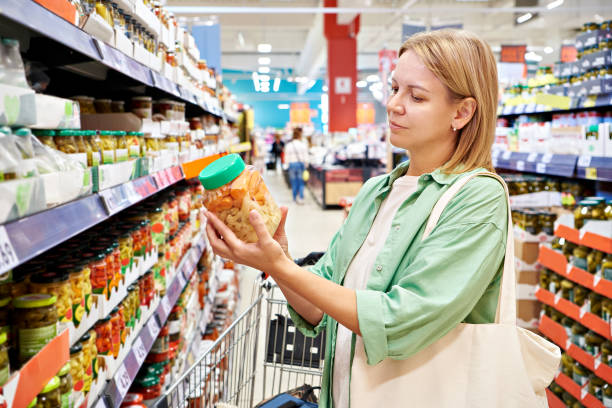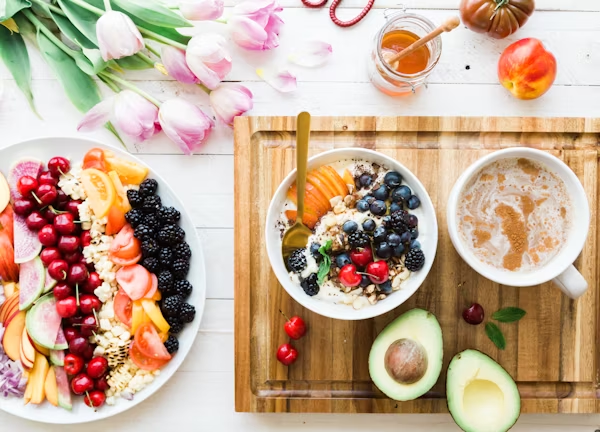Why Nutrition Labels Matter
Ever bought something labeled “healthy” only to find it packed with sugar and fat? Yep—been there, done that. Nutrition labels help you cut through marketing fluff and know exactly what you’re putting into your body. If you’re serious about health, fitness, or fat loss, learning to read them is a must.
The Anatomy of a Nutrition Label 🧐
Serving Size and Servings per Container
Always—always—start here. If the serving size says “½ cup” but you eat a full cup, you’re getting double the calories, sugar, fat, and everything else. Most people overlook this and wonder why they’re not seeing results.
Calories and Calories from Fat
Calories give you energy. Too many = weight gain. Too few = low energy. The “calories from fat” line is mostly historical—what matters now is what kind of fat you’re eating.
Understanding Macronutrients ⚖️
Total Fat vs. Saturated and Trans Fat
Not all fats are equal. Aim for healthy fats (mono- and polyunsaturated) and avoid trans fats at all costs (often listed as “partially hydrogenated oils”).
- Saturated fats are okay in small amounts.
- Trans fats = 🚫
Carbohydrates, Sugars, and Fiber
Carbs include fiber and sugars. Fiber is your friend; added sugar is not. Check if carbs come from whole grains or processed sugars.
Protein Content and What It Means
Protein helps you build muscle and stay full longer. A high-protein food (like Greek yogurt or lean meat) supports weight loss and strength goals.
The Sneaky World of Added Sugars 🍬
Natural vs. Added Sugars
Fruit has natural sugars. That’s fine. But when you see “added sugars” on the label (think corn syrup, cane sugar, fructose)—that’s what you need to watch.
How Much Sugar is Too Much?
The American Heart Association recommends:
- Men: ≤ 36g per day
- Women: ≤ 25g per day
That sweetened yogurt? It might already have 20g.
Sodium: The Silent Saboteur 🧂
Daily Recommended Intake
The average adult should aim for less than 2,300 mg of sodium per day. High sodium = water retention, bloating, and increased blood pressure.
Common High-Sodium Foods
Look out for:
- Canned soups 🍲
- Frozen meals 🧊
- Deli meats 🥪
- Sauces and dressings 🧴
A “healthy” frozen dinner could have over 1,000 mg in one meal!
Fiber – The Underrated Nutrient 🌾
Why Fiber is Essential
Fiber supports digestion, keeps you full, and stabilizes blood sugar. It’s a key player in fat loss and gut health. Aim for 25–30g/day.
How to Spot High-Fiber Foods
Look for:
- 3+ grams of fiber per serving = decent
- 5+ grams = high fiber
- Ingredients like oats, lentils, or chia seeds
Micronutrients and % Daily Value (%) 📊
What is %DV?
Percent Daily Value shows how much of a nutrient a serving contributes to your daily intake. It’s based on a 2,000-calorie diet.
Nutrients to Aim for vs. Limit
- Aim for more: Fiber, calcium, vitamin D, iron, potassium
- Limit: Saturated fat, sodium, added sugars
Tip: 5% DV or less = low
20% DV or more = high
Ingredient List – What to Watch Out For 🔍
Ingredients Listed by Weight
The first ingredient makes up the most of the product. If “sugar” or “white flour” is first? 🚨 Red flag.
Red Flags
- Hydrogenated oils = trans fats
- “Enriched” flour = stripped nutrients
- Multiple types of sugar (sneaky!)
Marketing vs. Reality – Don’t Be Fooled 🛒
Misleading Labels
Terms like:
- “Low-fat” (may be high in sugar)
- “Gluten-free” (can still be junk)
- “Light” (might just be watered down)
Don’t trust the front—turn the box around and check the facts.
Health Halos and Buzzwords
Just because something has “whole grain” on the label doesn’t mean it’s healthy. Read the ingredients to confirm.
Organic, Natural & Non-GMO – What Do They Mean? 🌿
USDA Organic vs. “Natural”
- Organic: Meets specific standards (no synthetic pesticides, etc.)
- Natural: No legal definition—basically meaningless
The Truth About GMOs
Genetically modified doesn’t mean unhealthy. Focus more on added sugars, fats, and sodium than labels like “non-GMO.”
Reading Labels for Specific Goals 🎯
For Fat Loss
- Focus on high protein, high fiber, low added sugars
- Avoid “low-fat” junk that’s high in carbs and sodium
For Muscle Gain
- Look for calorie-dense, high-protein options with quality carbs
Label Reading for Special Diets 🍽️
Gluten-Free, Keto, Vegan, and More
Check for certifications like:
- Certified Gluten-Free
- Vegan (no animal products)
- Keto (low net carbs)
Allergen Alerts
By law, allergens like nuts, dairy, soy, and wheat must be listed. Look under or near the ingredient list.
How to Compare Two Products Like a Pro 📉
What Really Matters
Don’t just pick the one with fewer calories. Look at:
- Sugar content
- Ingredient quality
- Fiber and protein per serving
- Serving size comparison
Don’t Be Fooled
One product might look “lighter” but have twice the serving size.
Mobile Apps That Help Decode Labels 📱
Top Picks
- MyFitnessPal – Tracks macros, calories, scans barcodes
- Yuka – Scans products and gives health ratings
- Fooducate – Breaks down what’s really in your food
Why Use Them
They make label reading faster, easier, and more accurate, especially for beginners.
Real-Life Grocery Store Tips 🛒
Front-of-Package Tricks
Ignore front claims like:
- “Heart healthy”
- “Supports immunity”
- “Good source of XYZ”
They mean nothing unless the nutrition label backs it up.
Scan Fast and Smart
Stick to the perimeter of the store for fresh foods. Read labels when you’re in the aisles. It gets faster the more you do it.
Practice Makes Perfect – Get Label-Savvy 💡
Start Slow
Pick 2–3 items you eat often. Read the labels carefully, understand them, and compare brands.
Become a Confident Shopper
With time, you’ll spot marketing tricks, unhealthy ingredients, and quality food at a glance. Knowledge = power.
🔚 Final Thoughts
Learning to read nutrition labels is like learning a new language—but once you get it, you’ll never look at food the same way again. It’s a game-changer for weight loss, health, energy, and even saving money. The more you know, the better choices you’ll make. And guess what? You don’t need to be a nutritionist to eat like one.
❓ FAQs
Is it better to count calories or read labels?
Both are helpful! Labels tell you the quality of calories, not just the amount.
What’s the worst thing to ignore on a label?
Added sugars and serving size. They’re the sneakiest.
How can I tell if a product is healthy?
Look for simple ingredients, high fiber/protein, and low added sugar.
Are all “low-fat” products good for fat loss?
Nope! Many are high in sugar and highly processed. Always read the label.
How often should I read labels?
Until it becomes second nature! Start with new products and your everyday staples.



